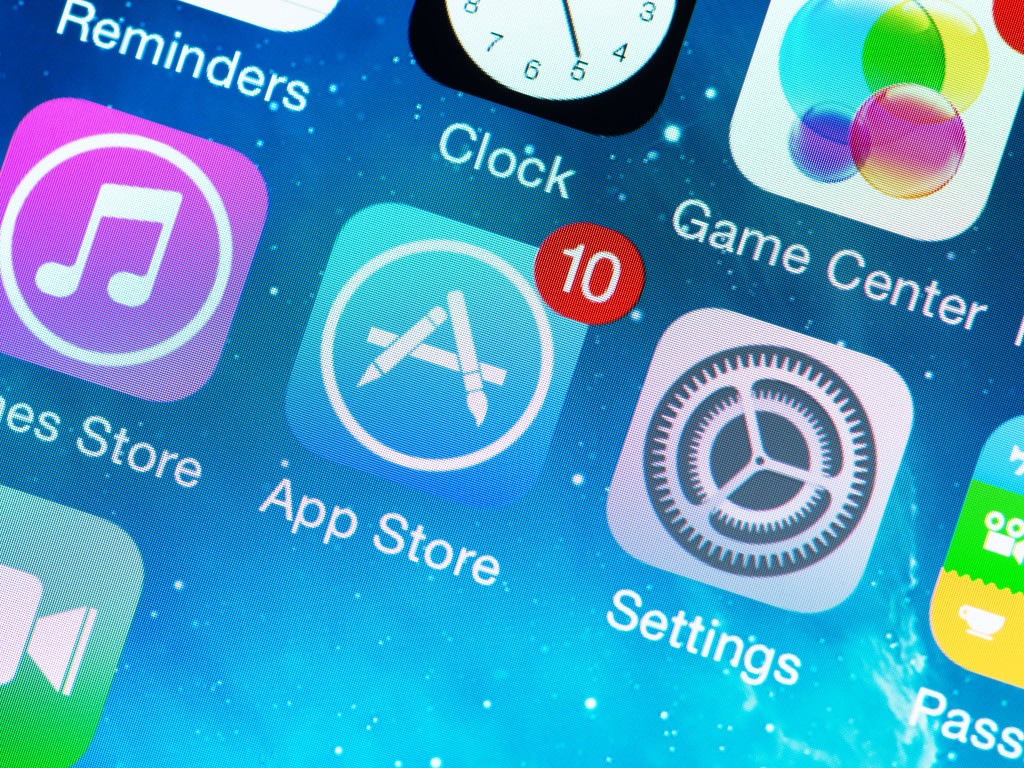A New Framework to Identify Educational Apps
Posted June 25, 2015 Image by Bloomua / Shutterstock.com
Image by Bloomua / Shutterstock.com
This post is one of the more than 20 articles that appeared as part of a series called Seeding Reading, published in 2014-15 on the EdCentral.org blog at New America and on the Joan Ganz Cooney Center blog.
By Kaycie Gillette-Mallard
Sitting at my desk grading math tests, a voice came over my classroom’s intercom “Ms. Gillette, you have a package in the front office.” I jumped up and rushed down the hall, excited to pick up a shiny new iPad, visions of all the awesome things my students would be able to do with it dancing in my head. I envisioned Miguel working on letter sounds, then passing the iPad to Valeria who would work on double digit addition. It was going to transform my kids’ classroom experience. I opened the box and navigated straight to the app store, ready to download all the educational apps I could find.
To my dismay, I quickly discovered that there were an overwhelming number of educational apps, and that they were not all created equal. Without downloading each app, and testing it out myself, it was difficult to tell which ones would be useful and which ones were a waste of learning time. Many of the apps looked cool, flashy, and had high ratings from users, but when I tested them out myself I felt like Goldilocks: the apps were too simple, too hard or not actually educational. I couldn’t find very many that were just right for my students, and the process was time consuming and haphazard. I felt that there had to be a better way to sift through all of the apps on the app store.
Kathy Hirsh-Pasek, Jennifer Zosh and colleagues examine this issue in Putting the Education in “Educational” Apps: Lessons from the Science of Learning, a recent article in the journal Psychological Science in the Public Interest. Hirsh-Pasek is the director of the Infant Language Laboratory at Temple University, and Zosh is the Director of the Brandywine Child Development Lab at Penn State University, Brandywine.
In their article, the researchers focus on the fact that within the past five years, app usage has exploded, becoming a ubiquitous part of daily life. They describe children as unknowing participants in a “vast, unplanned experiment,” growing up surrounded by smartphones, tablets, and a dizzying array of apps for the various devices, many of which did not exist five years ago. As of June 2015, there were over 80,000 educational apps available in the app store. It is difficult to say how many are truly educational, because developers have leeway to categorize their apps as they choose. The authors find that the vast majority of educational apps are untested and unregulated, and there is no clear rating system to determine how truly effective the app is as an educational tool. Although several groups have compiled helpful lists of apps that they consider to be educational, there is no standardized tool to evaluate apps educational value. (Here is a list of those lists, compiled by New America and the Joan Ganz Cooney Center last fall.)
This situation is further complicated by the fact that less than half of educational apps publicize information about their development team, and those that do provide vague titles such as “child development expert” and “literacy expert.” This was a finding from A Snapshot of Children’s Literacy and Language Apps, a report created as a part of Seeding Reading: Investing in Children’s Literacy in a Digital Age, a series of articles and analysis by New America’s Education Policy Program and the Joan Ganz Cooney Center at Sesame Workshop. The series, which is now part of a forthcoming book titled Tap, Click, Read: Growing Readers in a World of Screens, looks at how children learn language and literacy skills in an age of digital technology.
So, we have 80,000 apps in the education category, no official way to rate them, and don’t know who the app developers are. Parents and educators need a simple way to tell which apps are legitimately educational, and which are masquerading as educational.
Hirsh-Pasek and her colleagues use data from years of research on the science of learning to answer this question. They distill the research to create four principles, or pillars, of learning based on the areas where the research converges. The authors suggest that use of the four pillars can provide a new basis from which to evaluate existing “wave one” apps, and from which to develop new “wave two” apps. The four pillars of learning put forth by the researchers are:
Active involvement: The app must require thinking and intellectual manipulation that goes beyond mindless swiping or scrolling. We’ve all sat endlessly and absentmindedly scrolling through Instagram or Facebook, and this is not what we want for our children when they are supposed to be involved in a learning experience.
Engagement with learning materials: According to the authors, three elements of an “engaging” app are: Contingent interactions (each touch of the screen receives an immediate response), extrinsic motivation and feedback (response to child’s actions with clapping or moving to a next level), and intrinsic motivation (channel a player’s unique abilities). Children also need to be free from distractions both in the outside environment, such as background TV, and within the app such as pop ups.
Meaningful experiences: Meaning is based on the quality and quantity of connections between the app experience and the wider experience of a child’s life. For example, an app that connects a student’s experiences in the community at a grocery store combined with their academic knowledge of coins and money would be meaningful to the child’s life as they navigate an app that has them selling groceries.
Social interaction: Social interaction itself enables learning, and social contingency, the back and forth of interaction, is a key factor in learning. Apps can harness this through character responses to selections that the children make, through partner work on an app, or through videoconferencing.
The authors assert that an app that includes these four pillars within the context of a learning goal would be a truly educational app. In the absence of a learning goal, an app that includes the four pillars would be considered entertaining rather than educational. They suggest a simple two by two grid on which existing educational apps can be rated, and which developers can use in the future to create truly educational apps:
On the left side is the app’s combined score on the four pillars of learning. On the bottom is the presence of a learning goal. Use of a grid such as this would allow parents and educators to quickly evaluate exactly what an app’s educational value is, based on the four pillars of learning and the educational content included in the app.
The researcher’s four pillars of the science of learning are a logical and sensical basis from which to evaluate existing apps and develop new apps. Their proposal presents a solution to a problem that many parents and educators face. While there is certainly a time and place for “entertaining” apps (who doesn’t love a good round of Candy Crush?), it is our responsibility to ensure that the apps we put in front of our children in the name of learning provide an educational benefit. This is even more important given the increasing role that technology plays both in our classrooms and homes. We need to ensure that our students are spending educational time doing high quality work, and not allow our excitement in new technology trump our insistence on truly educational experiences for our children.
UPDATED 8/1/15 with name of the journal article in which this research appears.












